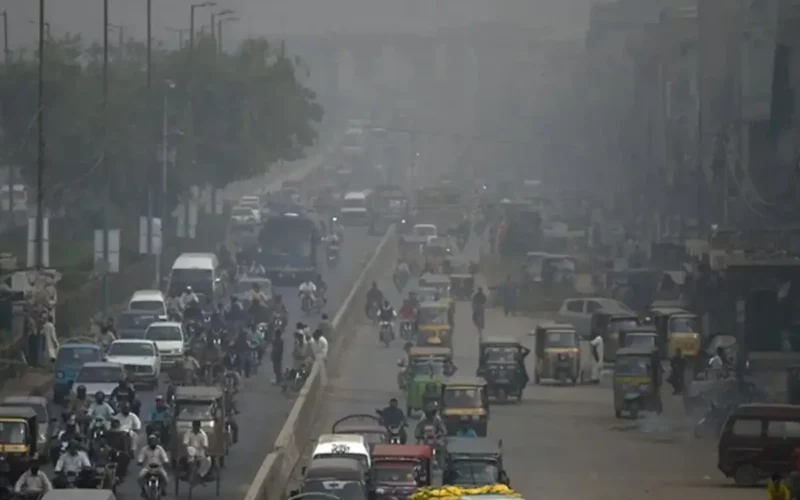Karachi’s air quality has worsened sharply, with several monitoring stations across the city recording PM2.5 concentrations well above safe limits, raising serious health concerns for residents.
Data from multiple air quality sensors in the city show pollution levels ranging from 101 to 184 µg/m³, categorizing the city’s air as unhealthy.
In Malir District, the air quality is highly concerning, with PM2.5 levels recorded at 155, indicating severe air pollution.
Follow the Times of Karachi channel on WhatsApp
Similarly, in Keamari Town, air pollution remains high with a PM2.5 level of 109. In Saddar Town, multiple locations show elevated pollution levels: DG House DHA 5 and Zafar Memon DHA both have PM2.5 levels of 109 and 87, respectively.
Meanwhile, NED University City Campus in Saddar Town reports a higher level of 136, and Fazlee Sons Private Limited shows a PM2.5 reading of 107.
Karachi Zoo, located in Jamshed Town, is facing significant air pollution, with a PM2.5 level of 173, one of the highest recorded in the city.
The Orangi Pilot Project in SITE Town has a PM2.5 level of 159, while the Climate Action Center and Urban Unit Karachi in Jamshed Town report PM2.5 levels of 162 and 156, respectively.
READ: Karachi set for warm dry weather with cool nights ahead
Another notable location in Jamshed Town, the Urban Resource Center, shows a PM2.5 reading of 155.
In North Nazimabad Town, Aman Khan Kaka Khail reports a PM2.5 level of 130, while University of Karachi, Institute of Space Science and Technology in Gulshan-e-Iqbal Town has a relatively lower PM2.5 level of 100.
However, in Gulshan District, Asif Gulistan-e-Johar faces a PM2.5 level of 142, and the NED Main Campus in Gulshan-e-Iqbal Town shows a PM2.5 level of 106.
How many categories are there to measure Air Quality?
AQI 0–50: Good
The air quality is considered excellent, with minimal or no risk to public health. There are no necessary precautions for the general population.
AQI 51–100: Moderate
Air quality is generally acceptable; however, there may be a slight health concern for a small number of individuals who are unusually sensitive to air pollution. Active children, adults, and people with respiratory conditions like asthma should consider limiting prolonged outdoor activity.
AQI 101–150: Unhealthy for Sensitive Groups
Sensitive individuals, such as those with asthma or other respiratory issues, may begin to experience health effects, although the general population is unlikely to be affected. It is advised that active children, adults, and those with respiratory conditions limit extended outdoor exertion.
Visit Times of Karachi website for the latest news-related content daily
AQI 151–200: Unhealthy
Health effects may begin to affect everyone, with sensitive groups potentially experiencing more serious symptoms. Active children and adults, and people with respiratory illnesses should avoid prolonged outdoor activity, while others—especially children—should reduce outdoor exertion.
AQI 201–300: Very Unhealthy
This range signals emergency-level health warnings. The entire population is more likely to experience adverse health effects. Those with respiratory conditions and active individuals should avoid all outdoor activity, while everyone else, particularly children, should limit time spent outdoors.
To stay informed about current Karachi Air Quality, visit TOK Weather Page
AQI 300+: Hazardous
Air quality is extremely poor, posing a serious risk to health for everyone. A health alert is in effect, and all outdoor exertion should be avoided by the entire population.










